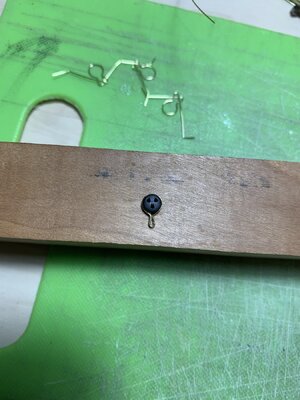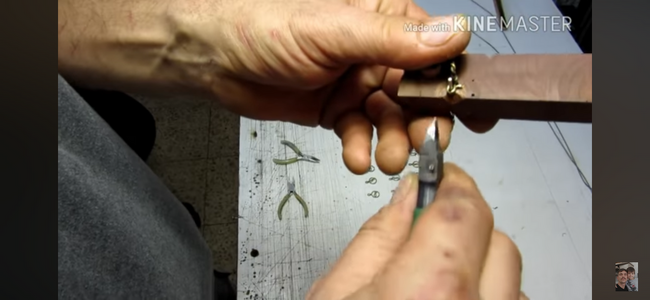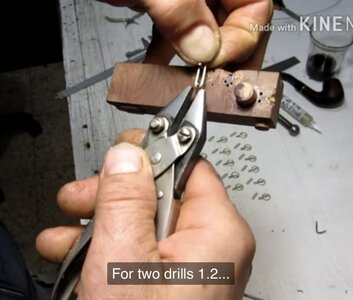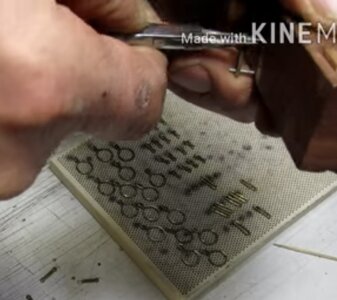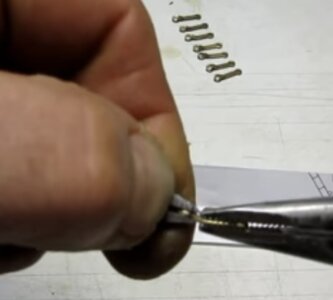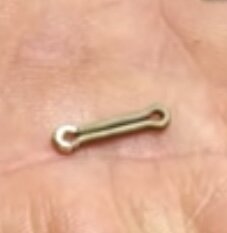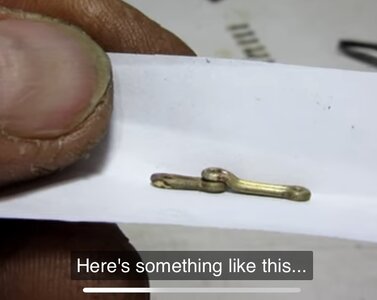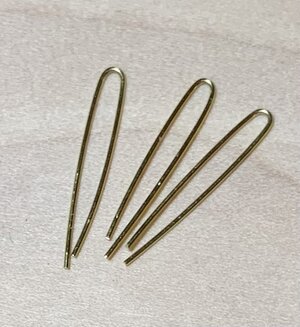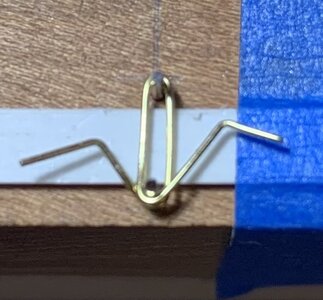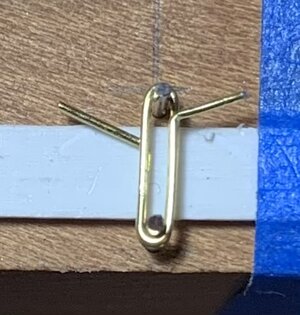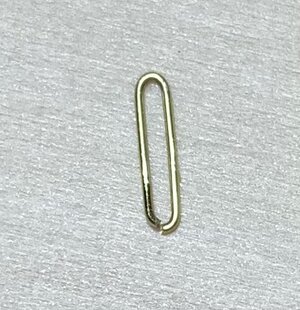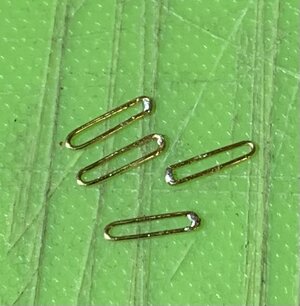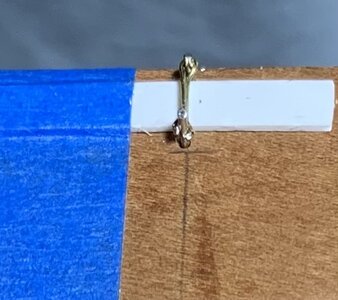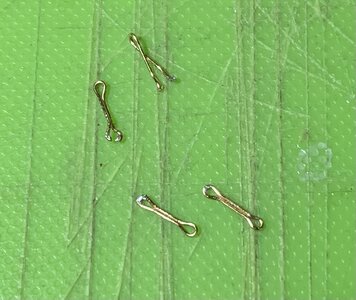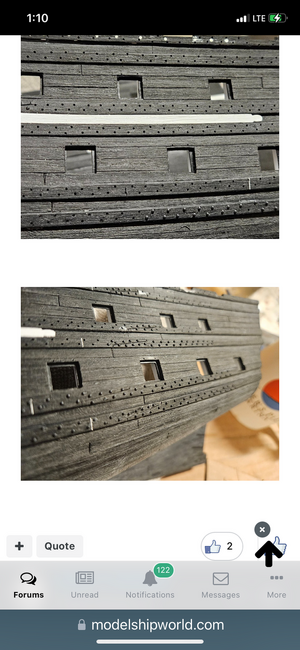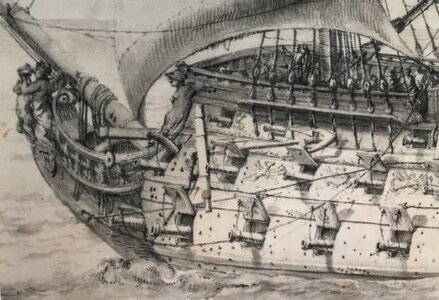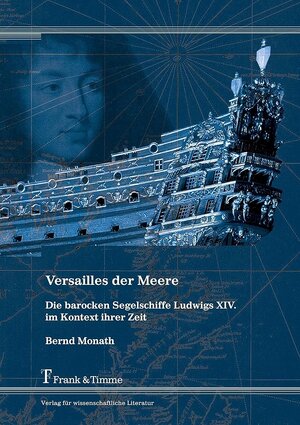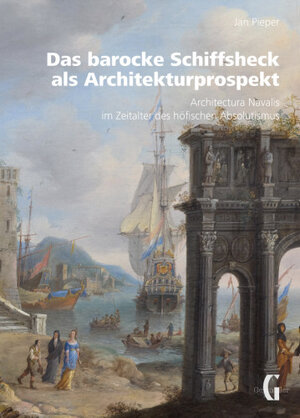So far, I’ve made the 5MM, fore and main deadeye strops. I just completed the 3.5MM backstay deadeye strops.
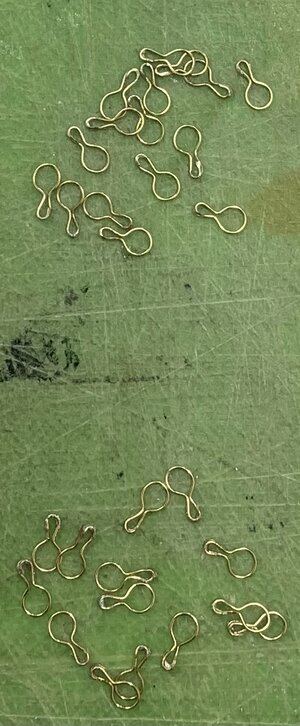
Below are the rough strops before filing away excess solder. Above are the cleaned-up strops. I have adopted a method described by R.C. Anderson, where the join overlaps and is concealed beneath the channels. I’m reasonably satisfied with these. Now that I have a new pair of nippers, I will get busy making the other links, although I still need to make 4MM deadeye strops for the mizzen chains.
I wanted to do something more familiar and fun, so I’ve started re-locating the trunnions for the main deck battery. To the left is the stock trunnion location, and you can see that the cascabel overhangs the carriage end to an excessive degree. To the right, I’ve shifted the barrel forward to where it should be:

This process begins by shaving away the existing trunnions, and making a simple marking gauge to locate the new trunnion position:
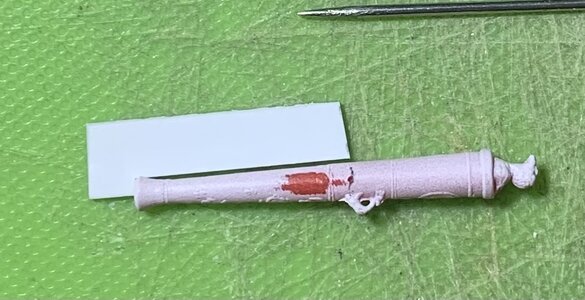
I use an awl to make a starting depression for the drill, otherwise the bit will just skate across the rounded surface. First, I chuck the bit in a pin vise to get a better bite on both locations. Then, I can chuck the bit in the Dremmel and drill though one side at a time:

A short length of .035 styrene rod is fed through the barrel, and a spot of liquid plastic cement, on the underside of each join, secures it. On my marking gauge, I inscribed a line indicating the projection of the trunnions from the barrel side. A pencil mark on the overlong trunnions gives me a reference to nip to. I clean the ends with a file, and voila:
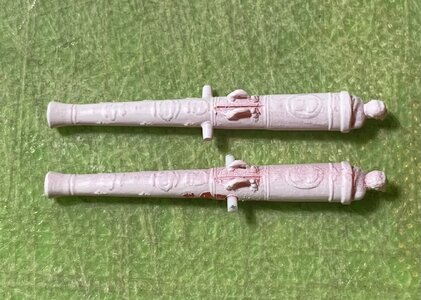
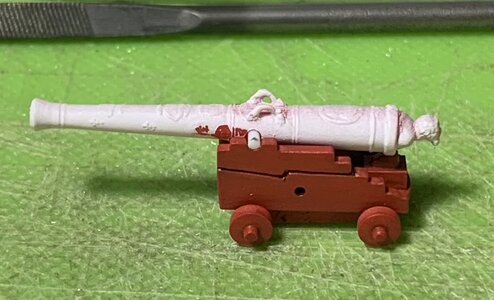
Corrected trunnions!
Ultimately, I will add either paper or foil cap squares to the visible, detailed guns.
Thanks for stopping by and looking in at This Old Project!

Below are the rough strops before filing away excess solder. Above are the cleaned-up strops. I have adopted a method described by R.C. Anderson, where the join overlaps and is concealed beneath the channels. I’m reasonably satisfied with these. Now that I have a new pair of nippers, I will get busy making the other links, although I still need to make 4MM deadeye strops for the mizzen chains.
I wanted to do something more familiar and fun, so I’ve started re-locating the trunnions for the main deck battery. To the left is the stock trunnion location, and you can see that the cascabel overhangs the carriage end to an excessive degree. To the right, I’ve shifted the barrel forward to where it should be:

This process begins by shaving away the existing trunnions, and making a simple marking gauge to locate the new trunnion position:

I use an awl to make a starting depression for the drill, otherwise the bit will just skate across the rounded surface. First, I chuck the bit in a pin vise to get a better bite on both locations. Then, I can chuck the bit in the Dremmel and drill though one side at a time:

A short length of .035 styrene rod is fed through the barrel, and a spot of liquid plastic cement, on the underside of each join, secures it. On my marking gauge, I inscribed a line indicating the projection of the trunnions from the barrel side. A pencil mark on the overlong trunnions gives me a reference to nip to. I clean the ends with a file, and voila:


Corrected trunnions!
Ultimately, I will add either paper or foil cap squares to the visible, detailed guns.
Thanks for stopping by and looking in at This Old Project!





